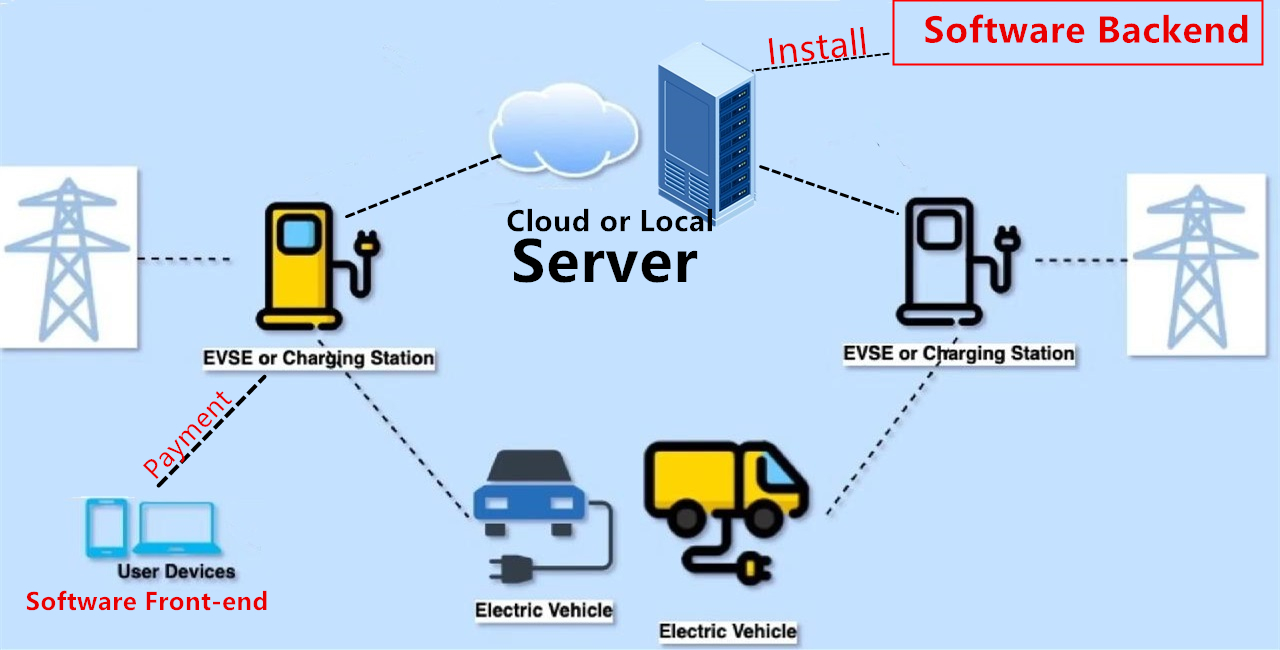What you need to know before operating a charging station? | iFlowPower

1.If you plan to run a charging station, you'll need a software package. There are two choice: Local Server and Cloud Server.
Local Server:
1) Installation Location: On the customer's premises.
2) Advantages: Higher security and data control, suitable for businesses with strict data privacy requirements.
3) Disadvantages: Requires self-maintenance and management, higher cost, less scalability.
Cloud Server:
1) Installation Location: Hosted by a third-party cloud service provider.
2) Advantages: High scalability and flexibility, low maintenance cost, accessible anytime, anywhere.
3) Disadvantages: Less control over data security, dependent on internet connection.
2. The software backend will include charger monitoring and management functions, allowing you to view each charger's daily working hours, charging amount, and fees charged. In addition, the software will have user management functions that allow you to view the names, contact numbers, consumption records and account balances of registered users.
After payment is made through the software, the charger transmits the information back to the server. Once the server confirms that the deduction is successful, it will send a start charging command to the charger."
3. The software can be developed as a web-based version or a mobile app version. The app version will allow users to pay directly by scanning a QR code, while the web version will redirect after scanning the QR code.
The user interface will be very user-friendly, simple and easy to use. Here is a diagram of the user interface for reference.

4.RFID method: Swipe the card to start charging.
This can be divided into two situations:
1) Personal use: Users can start charging by swiping their card directly.
2) Commercial use: Use software to manage the card, recharge after recharging, and swipe the card to deduct the charge after recharging is completed. The software can also manage card balances and view spending records."
5.OCPP: OCPP is just a protocol, which acts as a channel linking the software in the server with the charger. Without this channel, functionalities such as billing and monitoring management cannot be achieved. For commercial chargers, OCPP is a necessary feature.
6.Relationship Between OCPP and Payment System:
1)OCPP is the standard protocol for communication between the charging station and the backend server, ensuring command transmission and execution.
2) The payment system includes the frontend app and backend server system, responsible for handling payments and user management.












































































































